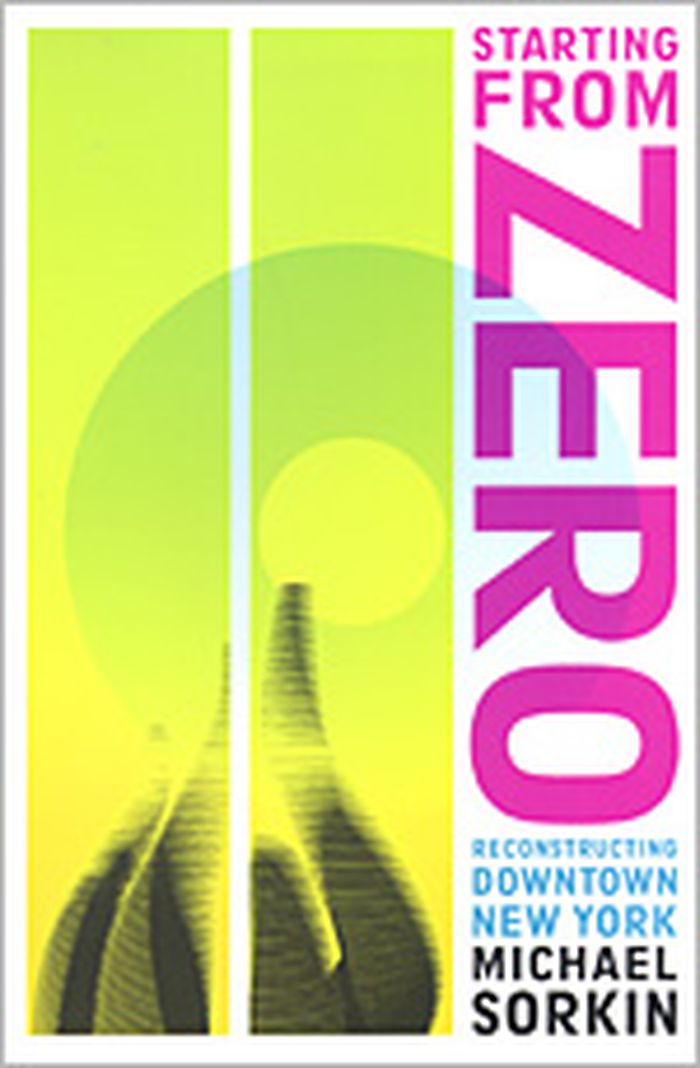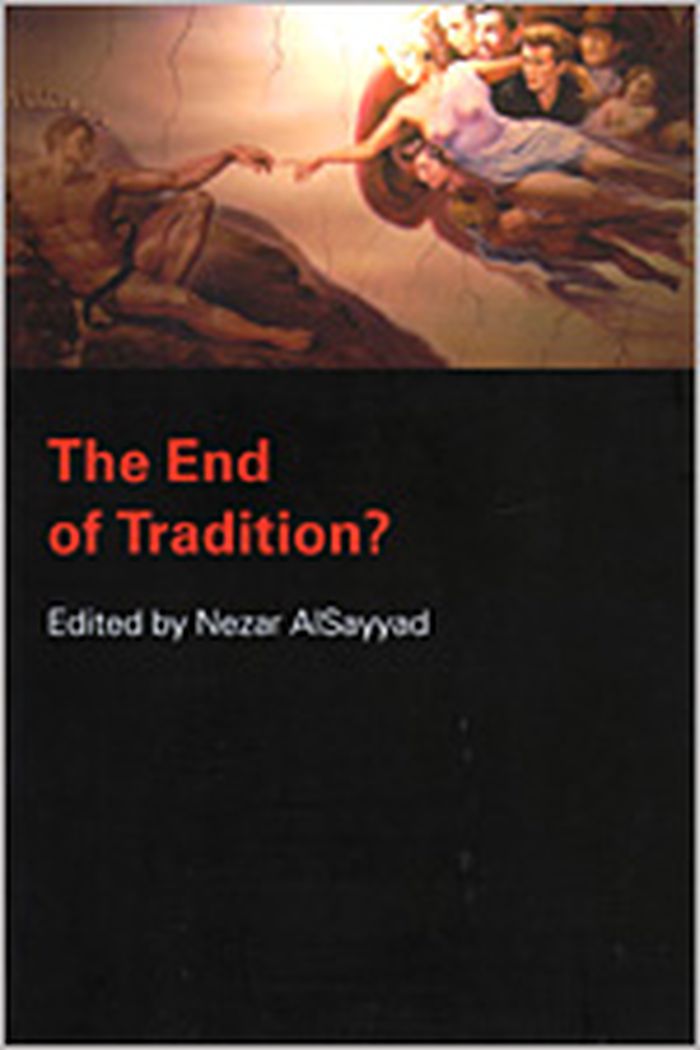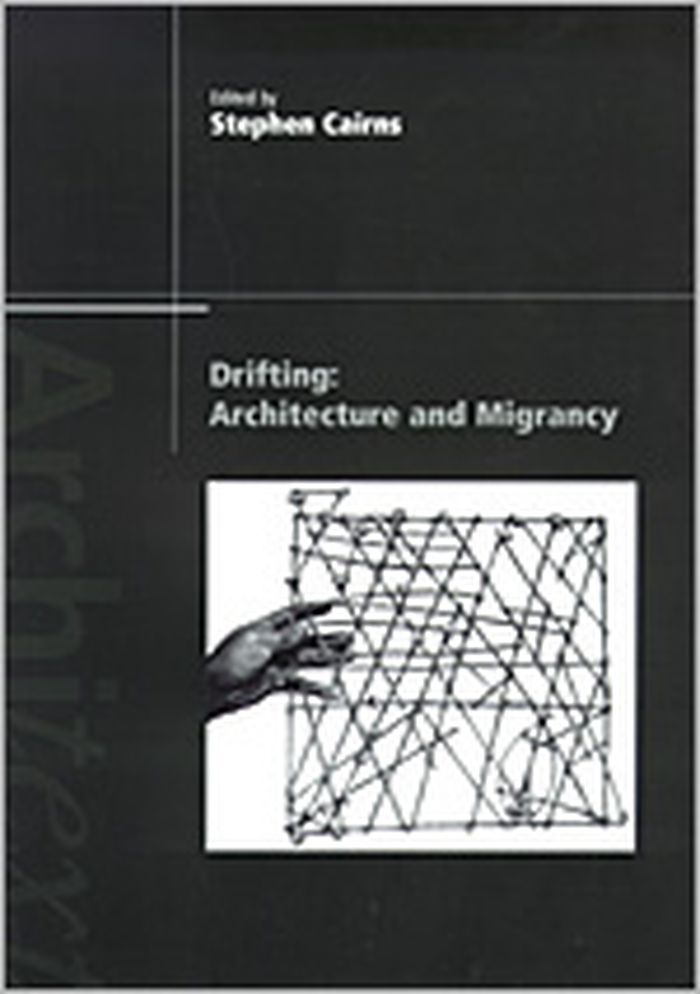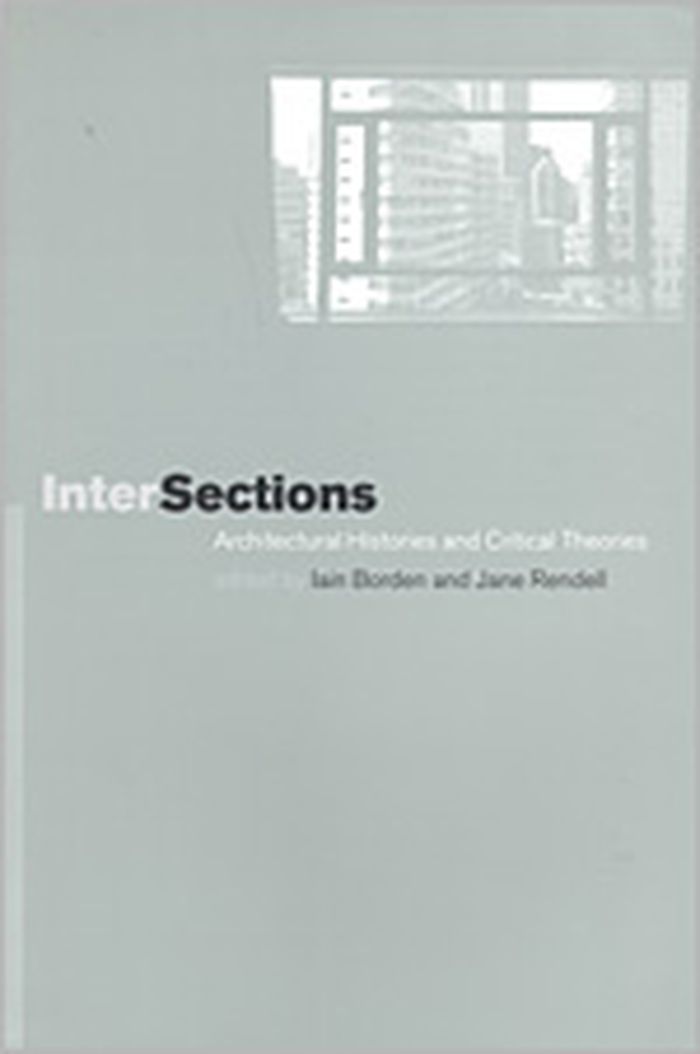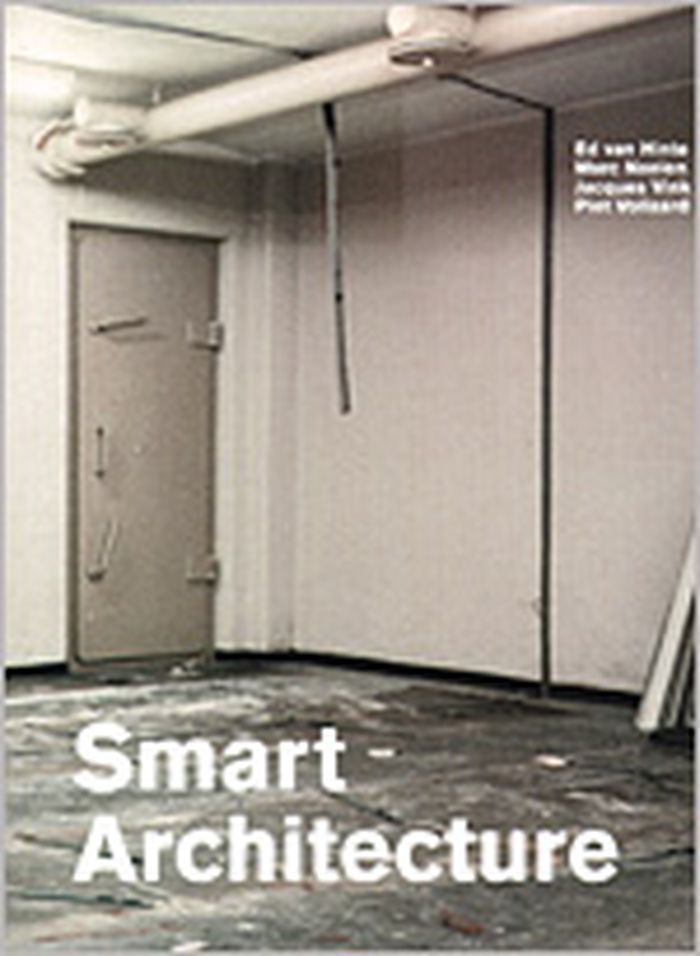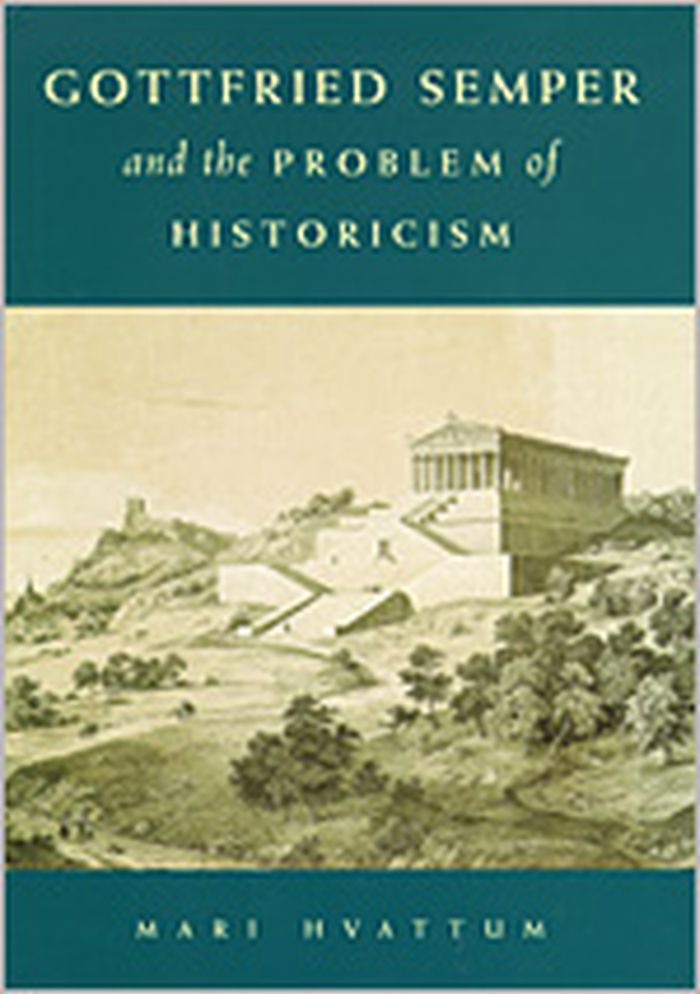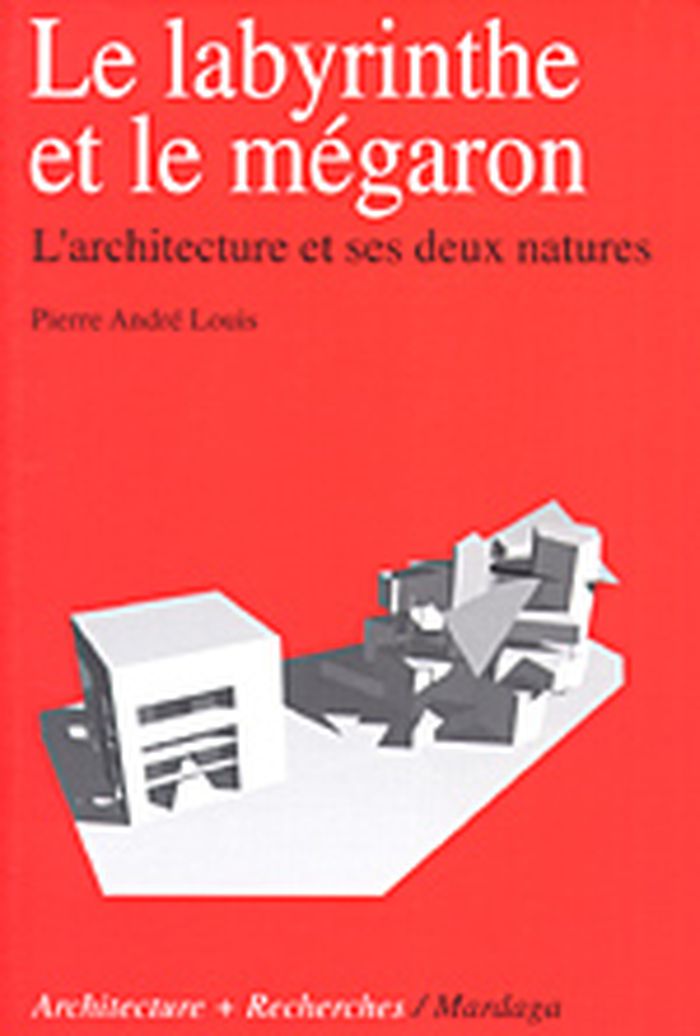$25.95
(available in store)
Summary:
Architect and social critic Michael Sorkin develops his own vision of the future lower Manhattan through a series of chronologically organized essays illustrated with full-color images of his own plans. Mixing his inimitable brand of social criticism with more personal reflections, "Starting from zero" offers a striving challenge to the "Ground zero" redevelopment plan(...)
Starting from zero : reconstructing New York
Actions:
Price:
$25.95
(available in store)
Summary:
Architect and social critic Michael Sorkin develops his own vision of the future lower Manhattan through a series of chronologically organized essays illustrated with full-color images of his own plans. Mixing his inimitable brand of social criticism with more personal reflections, "Starting from zero" offers a striving challenge to the "Ground zero" redevelopment plan recently chosen by New York's establishment insiders.
Architectural Theory
The end of tradition?
$65.50
(available to order)
Summary:
Rooted in real world observations, this book questions the concept of tradition - whether contemporary globalization will prove its demise or whether there is a process of simultaneous ending and renewing.
The end of tradition?
Actions:
Price:
$65.50
(available to order)
Summary:
Rooted in real world observations, this book questions the concept of tradition - whether contemporary globalization will prove its demise or whether there is a process of simultaneous ending and renewing.
Architectural Theory
$74.95
(available to order)
Summary:
In an era of globalisation, there is an unprecedented scale and nature of contemporary migrant flows, as well as the flow of goods, capital, ideas, images and technology. This sheer number and mobility of contemporary migrants clearly has massively disruptive effects on traditional modes of dwelling however they were manifest in everyday life. But contemporary migrancy(...)
Drifting : architecture and migrancy
Actions:
Price:
$74.95
(available to order)
Summary:
In an era of globalisation, there is an unprecedented scale and nature of contemporary migrant flows, as well as the flow of goods, capital, ideas, images and technology. This sheer number and mobility of contemporary migrants clearly has massively disruptive effects on traditional modes of dwelling however they were manifest in everyday life. But contemporary migrancy also has important consequences for the way dwelling is conceptualised more generally. This book is concerned with the modes of dwelling that emerge through migrancy; it is also concerned with the effects these modes of dwelling have for dominant conceptions of space and place; and finally, it is interested in the kinds of architectures that become possible if those effects are taken seriously. This book inspects the intersections between architectures of place and flows of migrancy. It does so without seeking to defend the idea of place, nor lament its passing. Rather, this book is an exploration of the often complex and unorthodox modes of dwelling that are emerging precisely from within the ruins of the idea of place. This exploration is informed by post-structuralist analyses of architecture and urbanism, and their representation in media such as film. It focuses on the Pacific Rim as an intensified zone of global flows. Within the Pacific Rim there are complex tensions between the new economies of Asia and the settler nations of Canada, the US, Australia and New Zealand. These tensions produce difficulties for the narrative of the nation state, and herald conditions that no longer conform to the geo-political norms of the old world.
Architectural Theory
$103.50
(available to order)
Summary:
Over the last decade, various critical theories have had an enormous impact on different disciplines and practices. Intersections is the first book to comprehensively survey this impact on architecture, providing 16 essays that intersect a particular critical theory with specific architectural ideas, projects and events. Authors are from Europe and the United States.
Intersections : architectural histories and critical theories
Actions:
Price:
$103.50
(available to order)
Summary:
Over the last decade, various critical theories have had an enormous impact on different disciplines and practices. Intersections is the first book to comprehensively survey this impact on architecture, providing 16 essays that intersect a particular critical theory with specific architectural ideas, projects and events. Authors are from Europe and the United States.
Architectural Theory
Smart architecture
$30.95
(available in store)
Summary:
Consider the notions of time, efficiency and interactivity in the context of architecture and instantly you may find your head clouded with images of technocratic modernism. Think of ecology and environmental issues in relation to buildings and what you get is either a vision of Arcadian green landscapes thinly built-on with small reed-roofed houses, or horrific projects(...)
Architectural Theory
January 2002, Rotterdam
Smart architecture
Actions:
Price:
$30.95
(available in store)
Summary:
Consider the notions of time, efficiency and interactivity in the context of architecture and instantly you may find your head clouded with images of technocratic modernism. Think of ecology and environmental issues in relation to buildings and what you get is either a vision of Arcadian green landscapes thinly built-on with small reed-roofed houses, or horrific projects with environmentally responsible add-ons. The smart thing to do is to think in terms of interaction, minimum use of materials and energy, and careful planning over longer periods of time, so as to reduce the environmental impact of this major human activity called building. What you then get is smart architecture. "Smart Architecture" is a lavishly illustrated, light-hearted book. The outcome of the research project that SLA Foundation presented on its smartarch website (www.smartarch.nl), it mainly consists of examples involving climate control, supplemented with new ideas on planning, building and construction and the application of intelligent systems, all contributing to sustainability. In the book challenges and opportunities are analysed, guided by numerous inspiring examples. It presents a smart way to fulfil user demands now and in roughly three hundred years' time.
Architectural Theory
$127.50
(available to order)
Summary:
Using key texts by the German architect and theorist Gottfried Semper, Mari Hvattum offers a reinterpretation of historicism, which is here viewed both as a philosophical outlook and as an architectural problem. Hvattum focuses on Semper’s two major concerns: an understanding of the ontological significance of art and architecture, and the rendering of art and(...)
Gottfried Semper and the problem of historicism
Actions:
Price:
$127.50
(available to order)
Summary:
Using key texts by the German architect and theorist Gottfried Semper, Mari Hvattum offers a reinterpretation of historicism, which is here viewed both as a philosophical outlook and as an architectural problem. Hvattum focuses on Semper’s two major concerns: an understanding of the ontological significance of art and architecture, and the rendering of art and architecture as the objects of scientific investigation and prediction. Hvattum investigates the background and implications of these conflicting concerns. By examining the historicist fusion of Romanticism and Positivism, the book seeks to understand the nature as well as the limits of the modern dream of a "method of inventing". More than an intellectual biography, "Gottfried Semper and the Problem of Historicism" explores historicism and its implications for modern architectural discourse and practice.
Architectural Theory
books
The rise of the sixties
$25.95
(available to order)
Summary:
'The rise of the sixties' provides an overview of the major themes and figures of the 1960s art world. Presenting an international array of artists against the background of world culture, Crow portrays the ways in which the American art scene- including such key figures as Leo Castelli, Eva Hesse, Jeasper Johns, Robert Morris, Robert Smithson, Cy Twombly, and Andy(...)
The rise of the sixties
Actions:
Price:
$25.95
(available to order)
Summary:
'The rise of the sixties' provides an overview of the major themes and figures of the 1960s art world. Presenting an international array of artists against the background of world culture, Crow portrays the ways in which the American art scene- including such key figures as Leo Castelli, Eva Hesse, Jeasper Johns, Robert Morris, Robert Smithson, Cy Twombly, and Andy Warhol- fit into the corresponding European and international movements of the time, among them Situationism, Conceptualism, Feminism, Environmentalism, and Op Art.
books
March 2005, London
Architectural Theory
books
$32.95
(available to order)
Summary:
Examining how monuments preserve memory, the essays demonstrate how phenomena as diverse as ancient drum towers in China and ritual whale-killings in the Pacific Northwest serve to represent and negotiate time. Connecting that history to the present, they explore not only how monuments have inspired travel and pilgrimage for millennia but also how new electronic media(...)
Architectural Theory
January 1900, Chicago / London
Monuments and memory, made and unmade
Actions:
Price:
$32.95
(available to order)
Summary:
Examining how monuments preserve memory, the essays demonstrate how phenomena as diverse as ancient drum towers in China and ritual whale-killings in the Pacific Northwest serve to represent and negotiate time. Connecting that history to the present, they explore not only how monuments have inspired travel and pilgrimage for millennia but also how new electronic media are changing the very nature of such pilgrimages. With an epilogue on the World Trade Center. Contributors : Stephen Bann, Jonathan Bordo, Julia Bryan-Wilson, Jas Elsner, Tapati Guha-Thakurta, Robert S. Nelson, Margaret Olin, Ruth B. Phillips, Mitchell Schwarzer, Lillian Lan-ying Tseng, Richard Wittman, Wu Hung.
books
January 1900, Chicago / London
Architectural Theory
$35.50
(available to order)
Summary:
L'architecture possède deux natures : elle se compose soit d'un volume unique, soit de plusieurs volumes. Selon que l'on procède à l'élaboration d'un a priori formel simple : cube, parallélépipède rectangle, cylindre, pyramide, dans lequel devra s'inscrire nécessairement la totalité du programme, ou selon que l'on agence entre eux des volumes correspondant chacun à une(...)
Le labyrinthe et le mégaron : l'architecture et ses deux natures
Actions:
Price:
$35.50
(available to order)
Summary:
L'architecture possède deux natures : elle se compose soit d'un volume unique, soit de plusieurs volumes. Selon que l'on procède à l'élaboration d'un a priori formel simple : cube, parallélépipède rectangle, cylindre, pyramide, dans lequel devra s'inscrire nécessairement la totalité du programme, ou selon que l'on agence entre eux des volumes correspondant chacun à une partie du programme pour aboutir enfin à un ensemble sans figure préétablie. Cette constatation toute simple est cependant le point de départ d'une large réflexion sur l'organisation de l'espace, aussi bien architectural qu'urbanistique. Elle est aussi le moyen d'une mise en lumière de correspondances dans l'histoire avec les idées philosophiques et les connaissances scientifiques du moment. Les matrices génératives que sont le mégaron et le labyrinthe correspondant aux deux natures de l'architecture, ont depuis toujours constitué l'essence même des espaces, et leur mise en valeur éclaire d'un jour nouveau non seulement l'histoire de l'art, mais donne aussi une clé de compréhension des créations du monde contemporain. Cette assertion d'une bipolarité de l'architecture et de l'urbanisme, avec d'un côté le simple et de l'autre le complexe, loin d'être réductrice, ouvre la porte à de multiples niveaux de compréhension.
Architectural Theory
books
The gray cloth
$24.95
(available to order)
Summary:
The German expressionist, architectural visionary, author, inventor, and artist Paul Scheerbart (1863-1915) wrote several fictional utopian narratives related to glass architecture. In "The Gray Cloth", the first of his novels to be translated into English, Scheerbart uses subtle irony and the structural simplicity of a fairy tale to present the theories of coloured glass(...)
The gray cloth
Actions:
Price:
$24.95
(available to order)
Summary:
The German expressionist, architectural visionary, author, inventor, and artist Paul Scheerbart (1863-1915) wrote several fictional utopian narratives related to glass architecture. In "The Gray Cloth", the first of his novels to be translated into English, Scheerbart uses subtle irony and the structural simplicity of a fairy tale to present the theories of coloured glass outlined in his well-known treatise "Glass Architecture". The novel is set forward in time to the mid-twentieth century. The protagonist, a Swiss architect named Edgar Krug, circumnavigates the globe by airship with his wife, constructing wildly varied, colored-glass buildings. His projects include a high-rise and exhibition/concert hall in Chicago, a retirement complex for air pilots on the Fiji Islands, the structure for an elevated train across a zoological park in northern India, and a suspended residential villa on the Kuria Muria Islands off the coast of Oman in the Arabian Sea. Fearing that his architecture is challenged by the colourfulness of women’s clothing, Krug insists that his wife wear all gray clothing with the addition of ten percent white. This odd demand brings him notoriety and sensationalizes his international building campaign. For the reader, it underlines the confluence of architecture with fashion, gender, and global media. In his introduction John Stuart surveys Scheerbart’s career and role in German avant-garde circles, as well as his architectural and social ideas. He shows how Scheerbart strove to integrate his spiritual and romantic leanings with the modern world, often relying on glass architecture to do so. In addition to discussing the novel’s reception and its rediscovery by contemporary architects and critics, Stuart shows fiction to be a resource for the study of architecture and places "The Gray Cloth" in the context of German Expressionism.
books
October 2003, Cambridge / London
Architectural Theory
